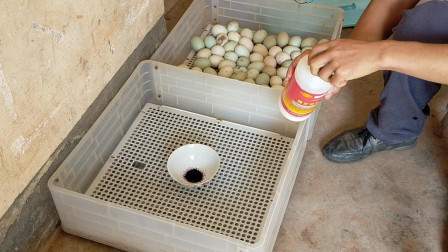


After the eggs are produced, the eggshell surface is quickly infected with pathogenic microorganisms through feces and bedding. These pathogenic microorganisms multiply rapidly. According to research, the number of bacteria on the eggshell surface of newborn eggs is 100-300, 500-600 in 15 minutes, and 4000-5000 in one hour; Especially for duck houses raised with thick bedding. Breeding eggs are more susceptible to bacterial contamination. The contaminated eggs not only affect the hatching rate, but also pollute the tools of the incubator and infect various diseases. Therefore, after the eggs are produced, in addition to collecting the eggs in time, they should be disinfected immediately to kill the pathogenic microorganisms attached to the surface of the egg shell. Here are some commonly used disinfection methods:
(1) Formalin fumigation
This method requires a well-sealed disinfection cabinet with 30 ml of 40% formaldehyde deep solution and 15 grams of potassium permanganate per cubic meter of room, fumigating for 20-30 minutes, closing the doors and windows during fumigation, keeping the indoor temperature at 25-27 ℃ and the relative humidity at 75-80%. If the temperature and humidity are low, the disinfection effect is poor. After fumigation, quickly open the doors and windows, remote air holes, and exhaust the gas. This method has a good disinfection effect on the eggs that have been cleaned on the outside, but has a bad effect on those dirty eggs with feces or other dirt on the outside. The gas generated during disinfection is irritant, so pay attention to protection during use to avoid contact with human skin or inhalation.
(2) Bromogeramide disinfection method
Arrange the eggs on the egg rack, and spray 1000% bromogeramine solution on the surface of the eggs with a spray. Limit method of disinfectant: take a portion of the original solution with a concentration of 5%, add 50 times of water, and mix evenly to prepare a thousandth solution. Pay attention when using bromogeramine solution for disinfection; Do not use it together with soap, iodine, potassium permanganate and alkali to avoid the failure of the common solution.